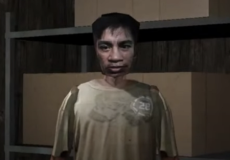

Hungry Lamu 2
Advertisement
Hungry Lamu 2 expands the unsettling world introduced in the first game, shifting its focus from surprise horror to slow psychological breakdown. The player once again follows the journey of Lamu, but this time the atmosphere is different from the beginning—there’s no more illusion of safety. The game opens in a quiet, dimly colored forest, where something feels wrong even before anything happens. Every step through the environment carries a sense of unease, as if the world is remembering something the player has yet to uncover. The forest becomes both a physical space and a mental trap, forcing players to confront Lamu’s past through exploration and fragmented events.
Advertisement
Similiar games
Hungry Lamu 2 expands the unsettling world introduced in the first game, shifting its focus from surprise horror to slow psychological breakdown. The player once again follows the journey of Lamu, but this time the atmosphere is different from the beginning—there’s no more illusion of safety. The game opens in a quiet, dimly colored forest, where something feels wrong even before anything happens. Every step through the environment carries a sense of unease, as if the world is remembering something the player has yet to uncover. The forest becomes both a physical space and a mental trap, forcing players to confront Lamu’s past through exploration and fragmented events.
Layered Gameplay and Transitions
One of the most striking aspects of Hungry Lamu 2 is how it switches between perspectives. The 2D sections are deceptively calm, almost meditative in their pacing. But the moment the game shifts into 3D, everything changes. The camera drops behind the player’s eyes, sounds become louder, and the color palette shifts into deep reds and greys. These transitions are used for effect, and as a core part of the storytelling. Players might find themselves walking through the same place in 2D and 3D, but the mood, layout, and implications are vastly different. The shift reflects Lamu’s psychological instability and gives the player a direct experience of disorientation and fear.
Interactive Elements and Environmental Detail
The environment in Hungry Lamu 2 tells the story. There are no direct quests, no dialogue boxes, and no scripted conversations. Instead, players are expected to read the world: broken tools, damaged signs, strange patterns on trees, and silent objects left behind in odd places. Puzzles are hidden in plain sight and often require using items in intuitive ways rather than solving structured tasks.
Common mechanics include:
· Discovering hidden paths or entrances through environmental clues
· Triggering hallucination sequences based on item interactions
· Using collected objects to manipulate parts of the world
· Unlocking branching story outcomes based on timing and exploration
· Interpreting visual cues as narrative markers
These mechanics encourage players to take their time, notice the details, and feel the weight of their surroundings.
Tone, Symbolism, and Storytelling
Hungry Lamu 2 doesn’t rely on gore or jump scares to generate fear. Instead, it uses emotional weight and symbolic storytelling. Lamu, once a cheerful character, now shows signs of internal conflict—his animations slow down, his eyes change, and he pauses in moments of silence. The forest, filled with unnatural emptiness, reflects the lingering effects of whatever happened before. The story suggests themes of experimentation, isolation, and regret, but nothing is spelled out directly. This ambiguity allows players to form their own interpretation and keeps the narrative open-ended.
Discuss Hungry Lamu 2




















